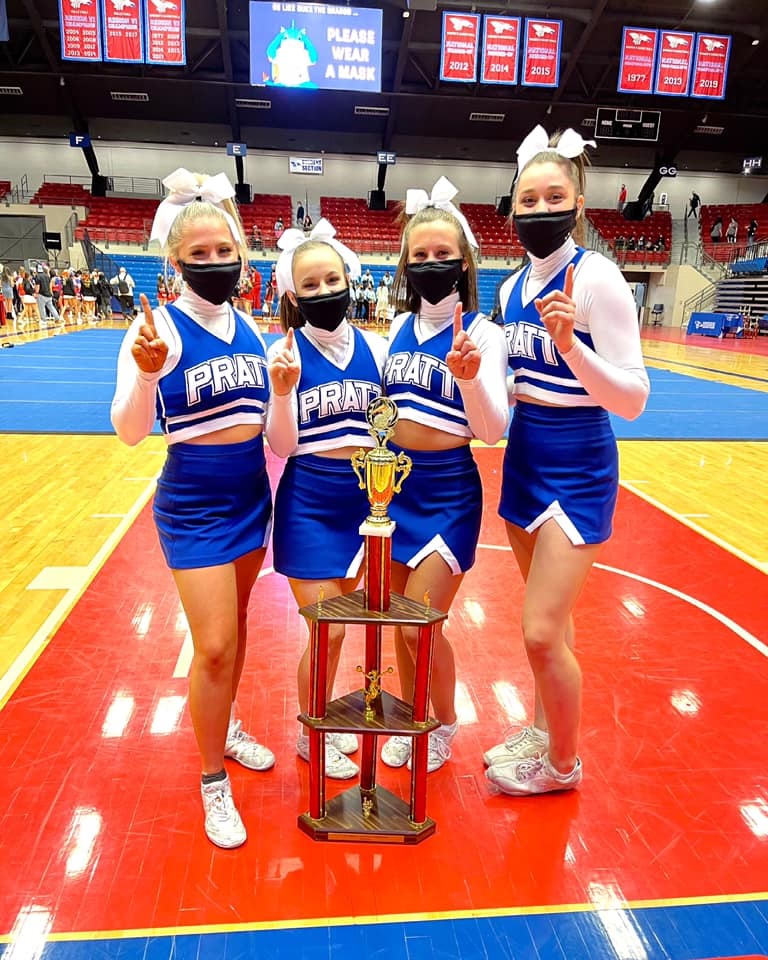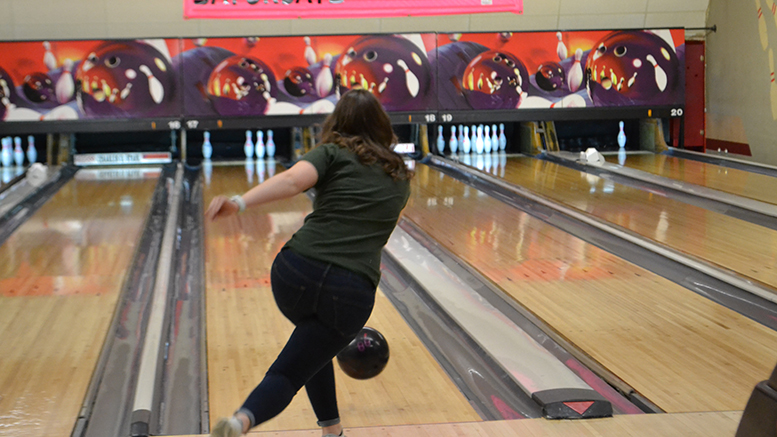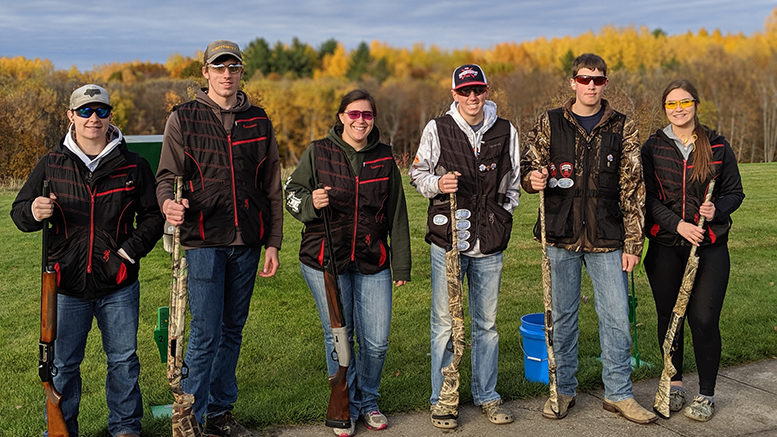Athletics have restarted at many community colleges since pausing last year due to the pandemic. While there’s been a focus on the return of football, basketball and baseball, some lesser-celebrated sports are growing.
Bowling, cross country, esports and swimming and diving are becoming more popular, partly because they’re fairly pandemic-proof, says National Junior College Athletic Association (NJCAA) President Christopher Parker.
In December, the NJCAA announced that it had sanctioned four emerging sports: competitive cheer, women’s wrestling, clay target shooting and men’s volleyball.
“Athletics is a vital driver of enrollment for many NJCAA member colleges. The addition of these four sports will also provide a pathway to increase opportunities for student-athletes around the country,” Parker said in a release.
When considering adding a sport to the NJCAA line-up, the organization evaluates it from a cost perspective. Is it an economically sound sport? Men’s volleyball, for example, is an inexpensive sport to adopt if a college already offers women’s volleyball. Same with women’s wrestling, which NJCAA also recently sanctioned.
Just last month, the association added women’s flag football to the list in a joint effort with the National Football League (NFL) and Reigning Champs Experiences (RCX). The sport is still at the grassroots level, Parker says, but it’s growing in high schools. Offering it at community colleges makes sense from the recruitment standpoint.
With the partnership, the NFL will provide a $150,000 grant to the NJCAA Foundation to distribute to NJCAA-member colleges that intend to participate in the sport over the next two years. The NJCAA Foundation, along with the NFL and RCX, will award $10,000 grants to 15 member colleges to move the initiative a step closer toward becoming a full championship sport over the next few years.
Source of enrollment and student success
Pratt Community College (PCC) in Kansas is one of the 15 colleges considering adding women’s flag football to its line-up of Beaver Athletics.
“We’re always looking for ways to bring students to campus,” says President Michael Calvert.
The college ended its football program in 1986, but it’s not lacking for other sports – track, wrestling, men’s and women’s soccer, baseball, rodeo and esports, just to name a few.
“Activities are very important for us. They’re a great source of enrollment, campus pride and community pride,” Calvert says. Students involved in athletics also “are driven,” he adds. Graduation rates for student athletes tend to be higher than for those not involved in activities.
Women’s flag football will “raise a few eyebrows,” Calvert says, but so did esports when PCC adopted that five years ago, back when the sport was still a novelty. Calvert doesn’t anticipate huge enrollment growth from adding the sport, at least not in the beginning, but he knows that it will enhance the student experience at PCC.
And the college already has the field for it. In 2019, in collaboration with the city, PCC opened a new facility that includes a soccer field and an all-weather track. The lined field also includes football goal posts. The facility is jointly used by the college and the community.
“Communities our size, we need to leverage every chance we get,” Calvert says.
He says the college talks with the high school sports association to see what sports are emerging and which sports are losing numbers.

Along with flag football, PCC is considering adding women’s wrestling, which is gaining popularity at high schools. Wrestling is “a big deal in the Midwest,” Calvert says. PCC’s men’s wrestling team won the Jayhawk Conference for the first time ever this year and is getting ready to head for national meet.
Calvert also wants to bring attention to some sports that don’t get as much publicity. The college’s co-ed competitive cheer team competed for the first time at the National Cheerleaders Association College Nationals earlier this month, taking second place in its division.
And clay target shooting – or trap shooting – is a sport that complements PCC’s wildlife outfitting and operations program.
Sports of all kinds “give people direction,” Calvert says. “There is a cost, but if your goal is to increase student success, activities and sports are a way to help solidify that.”
A sport that targets everyone
At Central Lakes College (CLC) in Minnesota, trap shooting is gaining popularity. Though it is not yet an “official” CLC sport, “students involved see themselves as student athletes. We see ourselves as a team,” says Erich Heppner, director of student life.
The popularity of clay target shooting has “exploded” in the Midwest, Heppner says. “It’s really tied to a way of life in rural areas.”
More high schools are participating in the sport, and students expect to be able to continue and compete at the college level, he says.
Part of the draw of the sport is that it is inclusive. CLC’s team has six men and six women. They’ve had students with disabilities participate, and students of all skill levels.
“It’s pretty amazing to be part of a sport that has nothing to do with how fast you can run, how high you can jump,” Heppner says. “It’s really about concentration and skills and focus as it relates to hitting the target.”
And everyone on the team gets to participate.
“There are no benchwarmers,” he says.
It’s also an inexpensive sport. The “equipment” students must provide is a firearm safety certification and a firearm. But there’s no real travel required. Competitions involve going to the local shooting range, which offers the team a discount, and inputting scores there.
The college has been able to raise funds to cover the cost of ammunition and clay target rounds.
Heppner says the sport is helping to “reset the narrative.”
“There’s a healthy and safe way for gun use,” he says.
And it’s proven to be a pandemic-safe sport, too. The team gathers outside at the shooting range, where each shooting station is six feet apart. In the fall, when most sports were still on hold, “we were the one group still allowed to compete,” Heppner says.
They did well in competition, too, coming in second place in their conference.
“We have our sights set on first place,” Heppner says.
Striking big
Another sport knocking down stereotypes is bowling.
“A lot of people don’t realize it’s a collegiate sport. They think it’s a fun hobby,” says Anthony DeLuca, head coach of the men’s and women’s bowling teams at Herkimer County Community College in New York.
Last month, the Herkimer women’s team finished in second place at a regional tournament while the men’s team took home fourth place.
“Each tournament is a cool experience,” DeLuca says. While football, basketball and baseball games are one-on-one, bowling competitions can have 15 to 20 teams competing. “Regional tournaments get loud. People get fired up.”

Though the college actively recruits bowlers for the teams, open try-outs also attract a number of students. The men’s and women’s teams each typically have eight players. This season, some of the bowlers were newer to the sport.
“They realized this is a real sport,” DeLuca says. During tournaments, bowlers may have 20 games in one day. “It takes a lot out of you.”
It’s also a rewarding game, he says. “If you get into it at a young age, you can do it into your 50s and 60s. It’s a cool sport you can do for the rest of your life.”
Beyond the two-year level, the National Collegiate Athletic Association (NCAA) recognizes women’s bowling, and some of Herkimer’s graduates have gone on to play at four-year institutions. Men’s bowling, however, is not an NCAA-sanctioned sport.
Because of Covid concerns, Herkimer’s bowling teams didn’t compete at the national tournament earlier this month. They are going for another kind of win, though: “Last year, our men’s team was academic team of the year for NJCAA [in the men’s bowling category]. That’s never happened before,” DeLuca says. “Hopefully, we can win it back-to-back.”

